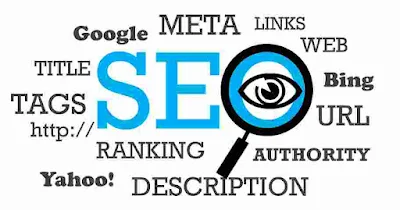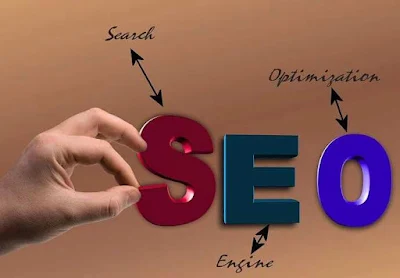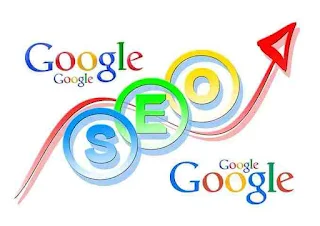Top 10 SEO Tips to Optimize Your Website for Search Engines
Search engine optimization (SEO) is the process of increasing the amount of traffic to your website by getting your site to rank higher than others on Google and other search engines . If you're looking for some SEO tips that you can use to optimize your website , here are 10 great ones.
First SEO Tips Keyword research
 |
| Search Engines Optimization |
Getting your site ranked at the top of search results will take a lot of work, but it is very possible with the right strategy. One of the most effective ways to get your website ranked high in search results is to invest in SEO tactics like keyword research and website analysis.
Keyword research starts with understanding what people are searching for online. Google has a free keyword tool that helps you identify keyword optimization opportunities and competitor activity. The tool will also let you find relevant terms and phrases that will help attract traffic to your site. This tool is very helpful for getting an idea of the keywords that people are looking for on a daily basis.
Use descriptive URLs
You can create good SEO with using descriptive URLs. The URL structure should include keyword phrases that describe your product or service, plus other keywords that help people quickly find your site and remember it's where they can find what they're looking for. For example, "retirement planning" is a good place to start.
Consider incorporating keyword meta tags
If you're serious about optimizing your website for SEO, you can incorporate meta tags into your content. Meta tags are specifically designed to increase the chance of users looking at your website. Meta tags work by describing your page's content. Think of meta tags as adding subtitles to your online videos, such as meta descriptions.They are a great way to get a quick picture of the content of your website.
Generate back links
 |
| Search Engines Optimization 2021 |
It's important that your website links to other sites. If the other site has enough traffic to drive search engine rankings, then that should increase your chances of ranking higher in the search results pages.It's important that your back links are from sites with high authority and strong rankings.
Make sure that your site is indexable
One of the most important parts of SEO is making sure that your website is indexed by search engines. You can check your site's indexability in Google Search Console, which is integrated into your site in most modern web browsers.
In the search results, make sure that all of your links are clickable and stand out from the competition.
Remove keyword stuffing
There is a specific type of content called keyword stuffing.
Create a proper site map
Site maps are a critical component of SEO, helping your customers and search engines navigate your site and find what they're looking for. The site map is a hierarchical structure of related topics on your website. Google encourages website owners to create a site map for their site before moving forward with other SEO practices.When it comes to website maps, you should keep the following tips in mind:
Use anchor text only
Inserting your entire page's content in the anchor text of every link on your site may not be the best way to increase traffic. In fact, you'll want to avoid using the entire page's content as anchor text for links. You don't want your site to look spammy. Keep your keywords within the anchor text, but avoid “word salad.
Make sure your site is responsive and fast
Google is now focusing a lot on speed as one of the most important SEO features of your site. You need to make sure your site is responsive if you want to rank higher. Your site should be mobile-friendly and if your website is not responsive, Google will ignore it in its search results.
Tag your content as quickly as you can
Most content gets indexed as fast as you can upload it to your site. You should tag your content as quickly as you can so that search engines can crawl and index it.
Respond to your site's comments
Comments from your visitors on your site helps you get more visitors on your site. Answer your visitors' questions as soon as you can and remember to ask them to visit other pages on your site.
Implement social media
Get started on social media by implementing the social media tool marketing 101. These social media channels require different strategies depending on the type of business you have. In this case, Facebook and Instagram are the most popular social media channels, but Twitter and Snapchat are catching on, and LinkedIn is growing, too.
Businesses of all sizes can use these channels for promotion. To optimize your post on Facebook, you have to create interesting content, and make sure your post gets in front of people who will read it. In other words, make sure your post makes it to people who are in the right demographic so that you will get the best response.
Also, be sure to follow the right rules and add appropriate tags and hashtags.
Get the basics right
As I mentioned in my SEO checklist article, you'll find the fundamentals that need to be right with regards to your website. Make sure that your site is clean, has descriptive titles and descriptions, plenty of content, good user interface and navigation, and quality plugins and themes. Don't use pop-ups or automated means to collect visitors, like, or go viral, which could seriously harm your ranking.
Related: 15 Blogging Platforms That Make It Easy to Build a Following
Think about Google's goals
Search engine algorithms aim to serve users with the best possible result possible. Your goal needs to be to provide the user with the best experience possible.
Title tags
Get a title tag on your homepage to help SEO. A title tag is simply a title to be used for the entire web page, or part of it. The general concept is that you put your name in the title tag (or your company name), but then you also use your business website address, your full name, and other keywords to create your title tag.
Let's assume that your site's name is Home Dog Training Center. You could use any of the following titles:
- Dog Training Center
- Dog Training Center
- Dog Training Center of Minnesota
- Dog Training of Minnesota
A caveat to remember: Title tags are not used in the <head> section of a web page. For a full explanation of why, read "Introduction to the structure of web pages" in Wikipedia.
Meta descriptions
One of the best SEO tips is to add a descriptive meta description. This is a brief description of what your website is all about that you will use to fill in Google's SERP descriptions. They are available on a wide range of blog platforms including WordPress, WordPress, Drupal, and Joomla, and can be added to the top or bottom of your website.
Google/Yahoo/Bing should be the primary search engine. I've seen many new websites with decent content, but no meta description.
H1s and H2s
A H1 tag is basically the first line of text on your website.
If your H1 tag is difficult to read or your H2 tag is very long, it can be very difficult for a search engine to rank your website high. This isn't a major problem for the more famous sites like Mashable, but your average small business website will not rank well without excellent H1 and H2 tags.
You can easily use an SEO tool like Google Analytics to optimize your H1 and H2 tags.
Squeeze text boxes
Use a tool like TextCafe to squeeze out extra space in your HTML code.
Images and alt text
Use high-quality images in your posts. Adding a picture from a stock image site can be a good way to go. Images are an SEO factor because the search engines rank them based on how your audience perceives them. Make sure your images are in the proper aspect ratio to provide the best results.
Add descriptive alt text to your images that describes what's in the picture. These texts have to be keyword-rich, too, or your audience might miss the description altogether. Make sure you include the keyword in both the title and the alt text to ensure that your audience can easily find the keyword.
Check your image frequency
Make sure you are using enough images to attract your audience. Make sure each image has more than 25% of the words that describe it.
Text formatting and readability
It is important to make sure that the text formatting of your website is understandable for a human read. This will keep your website in the search engine results. Make sure that you use a little more than the required number of words per sentence.
Links
Links are important in getting more traffic to your website, so make sure to link out on other blogs and social media pages and be sure to be using proper anchor text.
Links from domain name to domain name
When using this technique, it is important that the anchor text you use on the links you make links from the main domain to the subdomains. Keep the anchor text short to increase the clicks on your links.
Mobile optimization
Make sure that your website is mobile-friendly for people who use a mobile device. This will help them find you more easily on their phones.
Use cross-domain tracking
Make sure that your website has the ability to link to other sites on your domain and lets visitors access them, as well as view their information. Cross-domain tracking is the most important SEO strategy of all.
Regular content updates
Create high quality content to keep your audience coming back. Providing relevant and useful content will allow them to engage with your site, and the content will be highly likely to rank for their target keywords.
Consistent meta tags
Meta tags are the bread and butter of SEO.
Conclusion
 |
| Search Results Tricks In English |
So, if you're looking for some tips to make your site more search engine friendly, you've come to the right place. These 10 tips will help you to increase your web traffic, attract more customers, and even get new ones.

.jpg)

.jpg)

Please don't enter any spam link in the comment box.